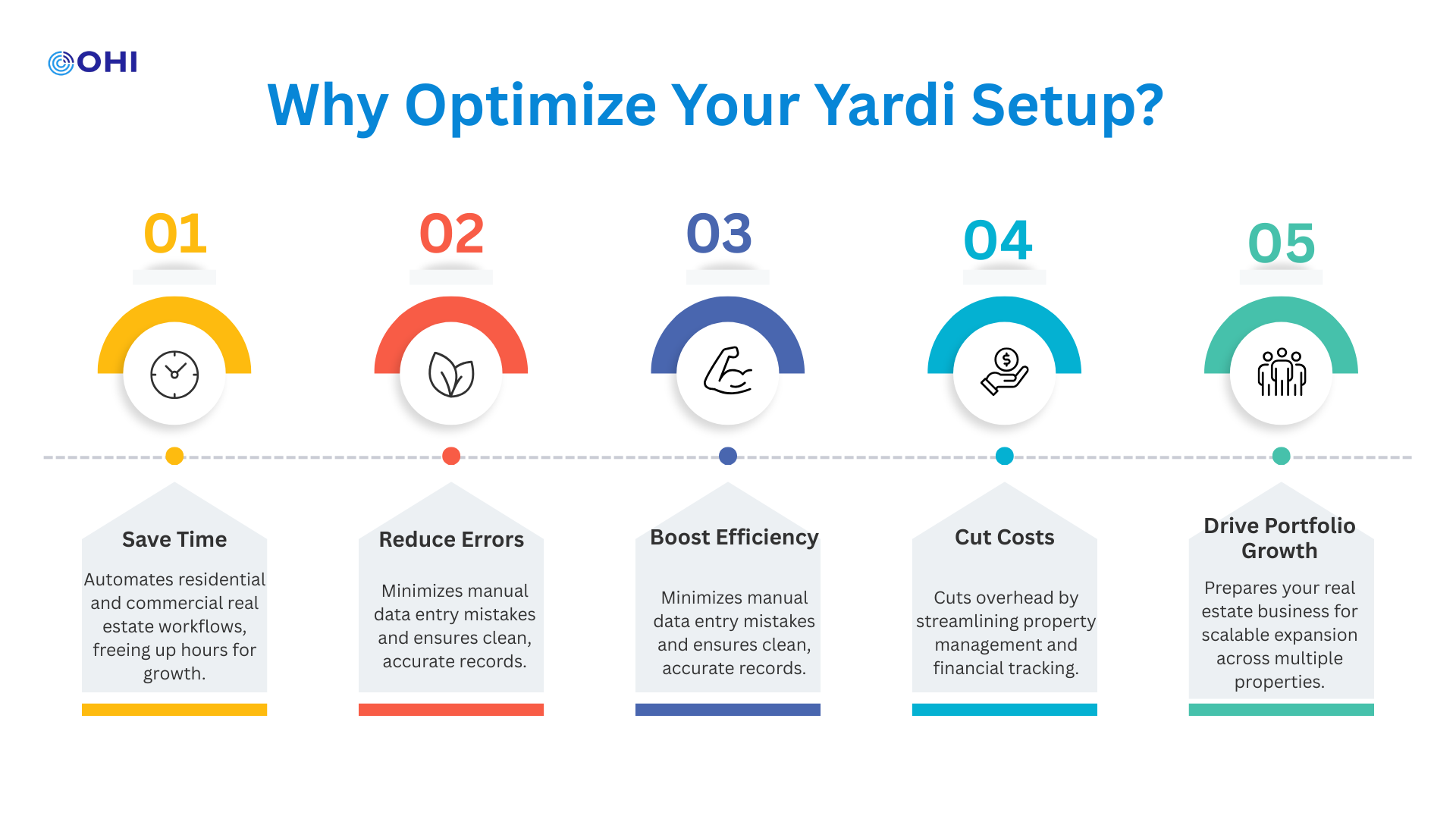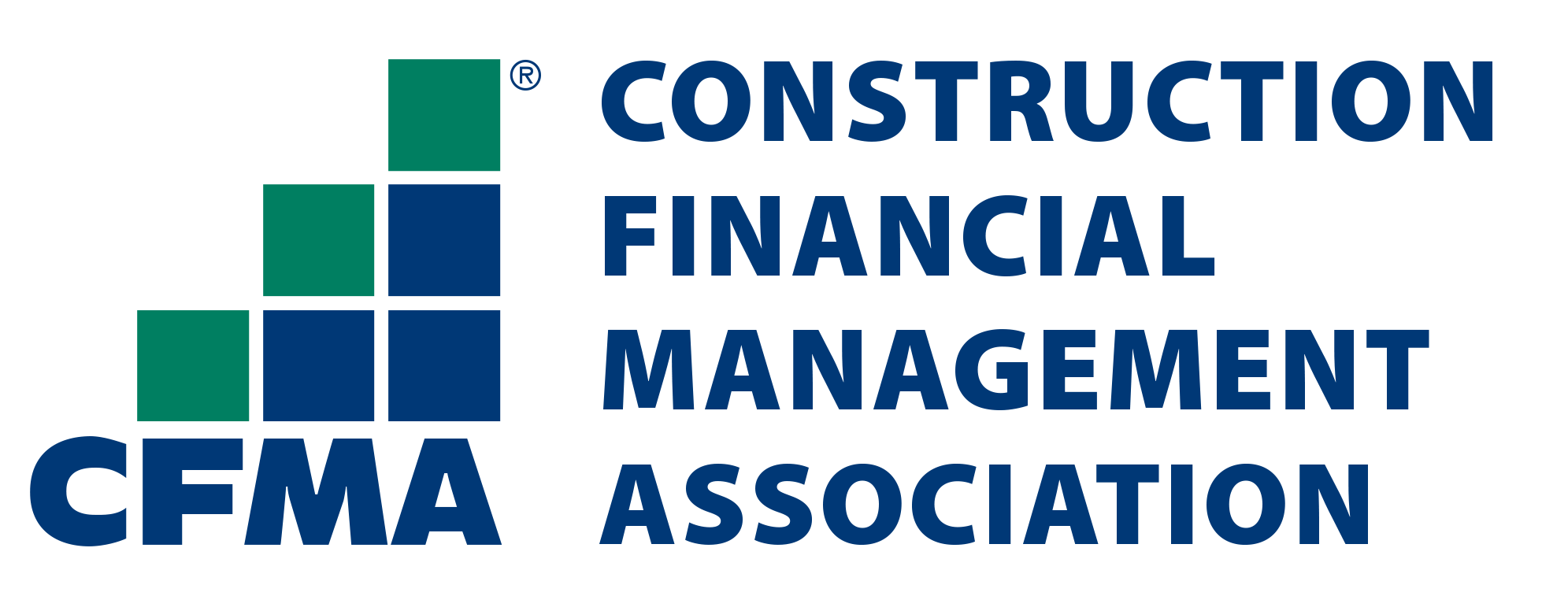
Step-by-Step Guide to Setting Up Yardi for Residential & Commercial Real Estate Portfolios
- October 23, 2025
- Tajinder Malhotra

Implementing Yardi is a critical step for property managers, owners, and CFOs who manage both residential real estate and commercial real estate. A properly executed Yardi setup for real estate portfolios ensures accurate reporting, smoother tenant management, and scalable growth.
The challenges facing modern real estate firms are clear: limited staffing, rising compliance requirements, and fragmented systems that slow down both residential real estate and commercial real estate operations. Hidden costs, unclear ROI, and audit risks only add to the pressure. That’s why a unified property management platform like Yardi Voyager is no longer optional—it has become the backbone for efficient, compliant, and scalable real estate portfolio management.
This step-by-step guide to Yardi setup for real estate portfolios will walk you through every phase of implementation, from pre-planning and data migration to residential real estate configuration, commercial real estate setup, training, and post-go-live optimization. Whether you manage apartment complexes, office towers, or a mixed-use portfolio, this guide ensures your Yardi implementation is not only technically accurate but also strategically aligned with your long-term real estate business goals.

Before diving into implementation, it’s important to understand why Yardi stands apart from generic accounting or property software. Unlike basic tools, Yardi offers an integrated real estate management platform that combines property management, accounting, ownership structures, financial reporting, budgeting, forecasting, construction management, and maintenance—all within a single database. This unified approach reduces errors, eliminates data silos, and enhances operational efficiency for both residential real estate and commercial real estate portfolios.
Yardi provides two primary solutions for property managers and owners: Yardi Voyager and Yardi Breeze. Voyager is tailored for larger, more complex real estate portfolios, offering extensive customization, scalable reporting, and advanced features that support professional management of diverse residential and commercial real estate assets.
Breeze, in contrast, is designed for smaller operations seeking a streamlined, easy-to-use platform. For most organizations planning a Yardi setup for real estate portfolios, Voyager delivers the robust functionality, compliance readiness, and operational control needed to manage day-to-day workflows while supporting long-term growth.
When setting up Yardi for residential and commercial real estate portfolios, different stakeholders face different operational and financial pain points. The table below highlights the common challenges by role:
| Stakeholder | Key Challenges | Why Yardi Setup Matters |
|---|---|---|
| Owners / CEOs | Rising operational costs, unclear ROI on technology, scalability doubts, shifting market trends, tenant retention pressure, compliance risks. | A well-configured Yardi system provides clear ROI tracking, portfolio-wide visibility, compliance controls, and scalability to support growth. |
| Property Managers | Time-consuming RFPs, manual processes, poor tenant communication, reactive maintenance handling, lease enforcement struggles. | Yardi automates workflows, centralizes tenant communication, streamlines maintenance requests, and standardizes lease administration. |
| Controllers / CFOs | Audit risks, manual reconciliations, compliance exposure, delayed reporting, difficulty tracking cash flow and performance metrics. | Yardi ensures accurate reconciliations, compliance-ready reporting, variance analysis, and robust investment performance tracking. |
| Accountants | Inefficient monthly closes, lack of standardized accounting workflows, AP/AR bottlenecks, payroll complexity, tax compliance challenges. | Yardi provides standardized accounting processes, automated AP/AR, payroll integration, and audit-ready tax reporting. |
Success begins with assembling the right team before starting any Yardi setup for real estate portfolios. Your implementation team should extend beyond IT and accounting to include operational stakeholders who understand the day-to-day workflows of both residential real estate and commercial real estate operations. The ideal team includes:
This cross-functional approach ensures that system configuration reflects actual operational needs rather than just software defaults.
The discovery phase is critical for identifying current workflow strengths, weaknesses, and bottlenecks that could follow you into the new system. This involves:
| Step | Details / Activities |
|---|---|
| Process Mapping | Document detailed workflows for each department, including: • Rent collection and processing procedures • Maintenance request handling • Lease administration workflows • Financial reporting and reconciliation processes • Vendor payment and approval chains |
| Data Assessment | Evaluate current data quality and completeness: • Property records and unit information • Tenant and lease data accuracy • Chart of accounts structure • Vendor and contact databases • Historical financial information |
| System Requirements Definition | Establish clear objectives for the Yardi setup: • Operational efficiency improvements • Reporting capabilities needed • Integration requirements with existing systems • Compliance and audit trail needs |
Your Chart of Accounts (COA) forms the foundation of your entire Yardi setup for real estate portfolios and determines the financial integrity of all reporting for both residential real estate and commercial real estate operations. A poorly structured COA can result in mis postings, inaccurate reports, and ongoing operational challenges. Best practices include:
Standardization Across Entities: Use the same chart of accounts for all business entities within your portfolio. This approach simplifies reporting, analysis, and potential future migrations or expansions.
Account Numbering Strategy: Implement at least 4-digit account numbers to provide room for future expansion without disrupting your organizational structure. Consider this hierarchy:
Clear Naming Conventions: Establish consistent, descriptive account names that are immediately understood by all users. Avoid abbreviations that could cause confusion.
Validation and Testing: Utilize Yardi’s Chart of Accounts validation tool to identify potential issues before implementation. This tool reads CSV files and identifies problems like missing heading accounts or incorrect account mapping.
The way properties and legal entities are structured in Yardi affects everything from reporting to workflows and user permissions. Consider these critical elements:
| Configuration Area | Details / Recommendations |
|---|---|
| Ownership Structure | Properly configure owner relationships, management companies, and property hierarchies. Ensure each property is linked to: • Chart of Accounts • Vendor lists • Bank account configurations • Reporting hierarchies |
| Property Control Settings | Configure default settings that apply across your portfolio, including: • Late fee structures and grace periods • Default GL account assignments • Maintenance and delinquency procedures • Bank account relationships |

Data migration is often the most challenging part of any Yardi setup for real estate portfolios, yet it is frequently treated as an afterthought. Poor data quality can compromise reporting, confuse staff, and frustrate tenants across both residential real estate and commercial real estate operations from day one.
Data Cleansing Process: Before migration, implement a comprehensive data cleaning initiative:
Field Mapping Strategy: Identify Yardi’s mandatory fields and key tables first, then map backward to your source data. Ensure every required Yardi field has an equivalent source mapping or a conscious decision to leave it blank.
Migration Validation: Set aside adequate time for data validation, especially for multi-family properties where shared amenities, parking assignments, and layered unit types can complicate records. Consider engaging Yardi consulting services if your internal team lacks bandwidth for thorough validation.
Thorough testing prevents costly issues after go-live:
| Testing Area | Key Activities |
|---|---|
| Data Integrity Testing | Verify that all critical data elements have transferred correctly: • Property and unit information • Tenant records and lease details • Financial balances and historical transactions • Vendor information and payment histories |
| Workflow Testing | Test key operational processes to ensure smooth functionality: • Rent posting and collection procedures • Work order creation and completion • Financial reporting accuracy • User access and permissions |
| Parallel Processing | Run both the old and new systems simultaneously to: • Identify discrepancies • Ensure accurate transaction posting • Confirm operational continuity before full go-live |
Proper user role configuration balances operational efficiency with data security. Too loose permissions risk data corruption; too strict permissions hinder productivity.
Role-Based Access Design: Structure permissions around job functions rather than departments:
Security Group Configuration: Create security groups that assign specific menu sets to user roles. This approach allows for granular control over system access while maintaining operational efficiency.
Permission Auditing: Implement regular permission reviews every six months to prevent “permission creep” that can clutter the system and introduce errors.
For enhanced security and user experience, create custom menu sets that limit functionality to role requirements. This approach:
Yardi’s accounting engine is powerful but unforgiving if configured improperly. Critical configuration elements include:
Entity and Property Level Financials: Configure how property-level expenses roll up to entity and portfolio levels. Ensure management fee calculations align with ownership agreements and intercompany rules function correctly.
Trust Accounting Configuration: For applicable jurisdictions, configure trust accounting to maintain separation between tenant funds and operating capital, ensuring compliance with state-specific regulations.
Bank Account Integration: Set up bank feeds and reconciliation processes:
Revenue Recognition Setup: Configure rent schedules, recurring charges, and revenue recognition policies to align with your accounting standards (GAAP or IFRS requirements).
Establish budgeting workflows that connect leasing, asset management, and finance teams:
Residential real estate properties require specific configuration elements:
Lease Administration: Configure standard residential lease terms:
Tenant Management: Set up residential-specific tenant workflows:
Compliance Features: Configure residential compliance requirements:
For residential properties, RentCafe integration provides essential tenant-facing services:

Commercial rea estate properties require more sophisticated lease handling:
Complex Lease Structures: Configure support for various commercial lease types:
Tenant Services: Set up commercial tenant-specific features:
Financial Reporting: Configure commercial-specific reporting:
Deal Management: Configure deal pipeline management for leasing teams:
Construction Management: For properties with ongoing improvements:
Training effectiveness depends on relevance to daily job responsibilities. Design training sessions around specific roles:
Leasing Staff Training: Focus on guest card creation, move-in processing, unit availability management, and tenant communication tools.
Maintenance Team Training: Emphasize work order creation, scheduling, completion tracking, and inventory management.
Accounting Staff Training: Cover bank reconciliations, journal entries, month-end procedures, and financial reporting generation.
Management Training: Focus on dashboard usage, reporting capabilities, performance analytics, and decision-making tools.
Establish support mechanisms for post-implementation success:

Plan your go-live timing strategically:
Track key performance indicators post-implementation:
Yardi implementation is not a one-time event but an ongoing optimization process:
Identify processes that can be automated to reduce manual workload:
Leverage Yardi’s integration capabilities:
Configure the system to support regulatory compliance:

Successful Yardi implementation for real estate portfolios requires careful planning, proper resource allocation, and attention to operational details. Investing in a thorough Yardi setup pays dividends through improved efficiency, enhanced financial control, better compliance, increased tenant satisfaction, and reduced operational costs across both residential real estate and commercial real estate operations.
Remember, the success of your Yardi setup for real estate portfolios isn’t measured solely by going live—it’s measured by how effectively the system supports your long-term business objectives. With proper planning, configuration, and ongoing optimization, Yardi becomes more than just software; it transforms into the central operating system that drives your residential and commercial real estate portfolio’s growth and operational excellence.
The complexity of managing modern residential real estate and commercial real estate portfolios demands sophisticated tools, but more importantly, it requires thoughtful implementation that aligns technology with your business processes. By following this comprehensive guide and investing in proper Yardi setup, training, and ongoing optimization, your organization will be well-positioned to leverage Yardi’s full potential for sustainable growth, efficient operations, and measurable ROI.
The timeline for a Yardi setup for real estate portfolios depends on portfolio size and complexity. A small residential real estate portfolio may take 4–6 weeks, while larger commercial real estate portfolios with advanced reporting, integrations, and custom workflows can take several months. Planning, clean data migration, and staff training are key to faster implementation.
Yes. Yardi Voyager is designed to handle both residential real estate management (apartment complexes, multifamily housing, student housing) and commercial real estate management (office buildings, retail spaces, industrial assets). It provides end-to-end solutions for leasing, accounting, maintenance, and compliance across diverse property types.
A properly executed Yardi implementation delivers accurate financial reporting, tenant communication tools, automated lease management, maintenance coordination, and scalability for both residential real estate and commercial real estate portfolios. It reduces manual errors, cuts audit risks, and helps owners and CFOs gain clearer ROI insights.
Costs for Yardi setup vary depending on modules, user licenses, integrations, and the size of your real estate portfolio. Smaller residential real estate firms may pay significantly less than large commercial real estate operators. While the initial investment can be substantial, the long-term ROI often outweighs the costs due to automation, efficiency, and reduced compliance risks.
Absolutely. Yardi is highly configurable and works for mixed-use portfolios that include both residential and commercial real estate assets. Features like flexible reporting, custom dashboards, and automated workflows make it ideal for operators managing diverse property types under one system.
Contact us for a customized NO OBLIGATION proposal for outsourcing your accounting activities.









